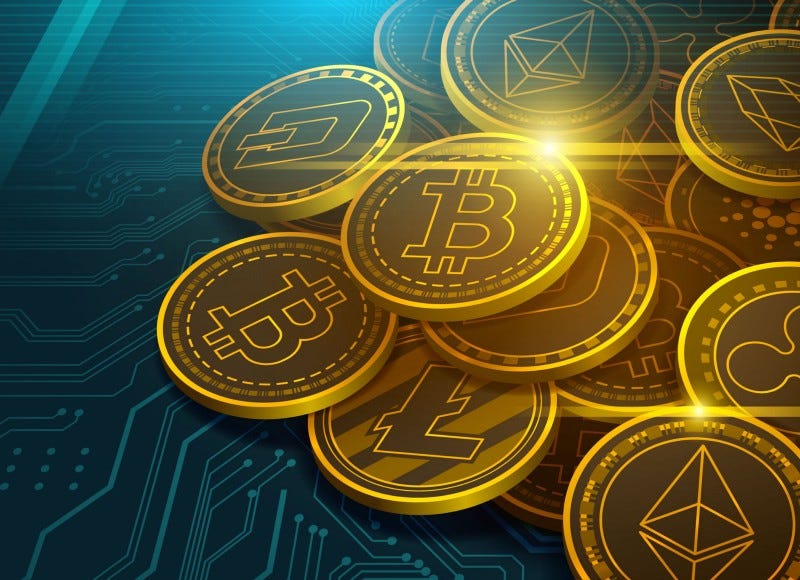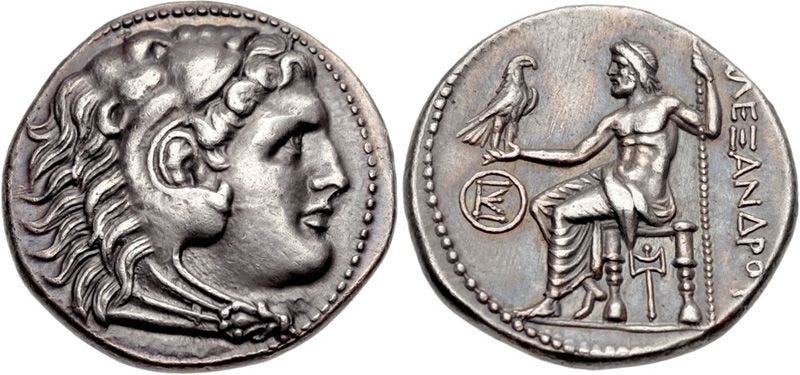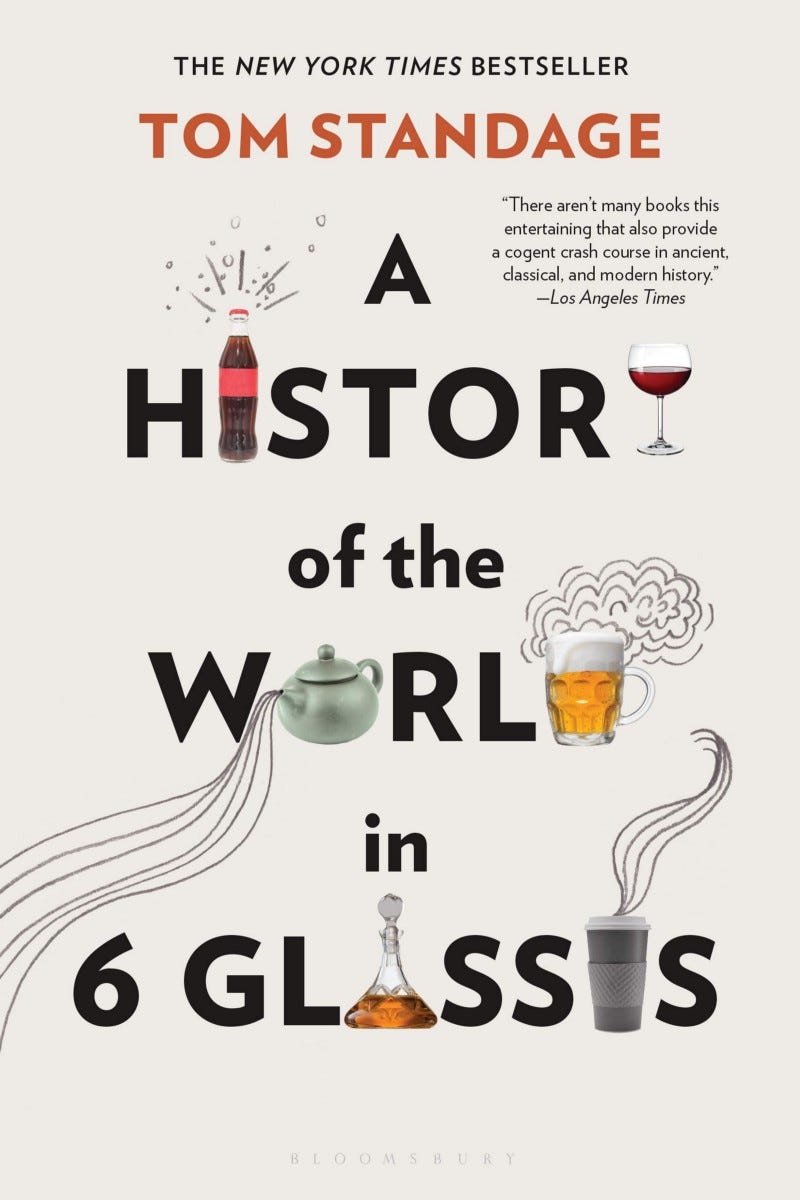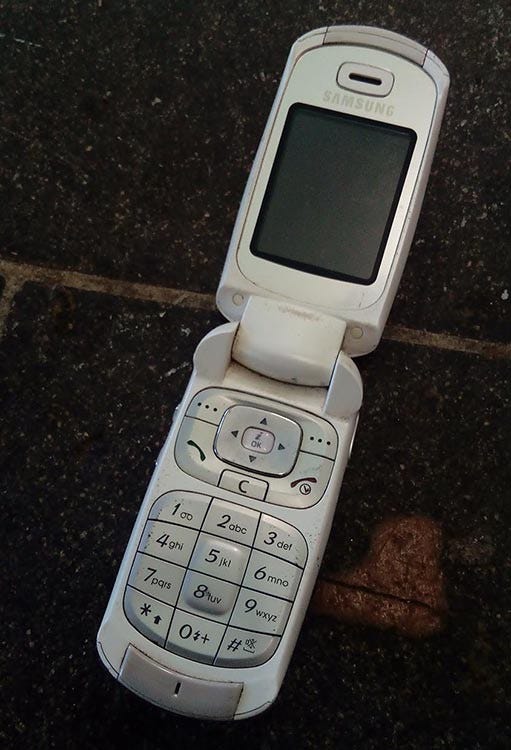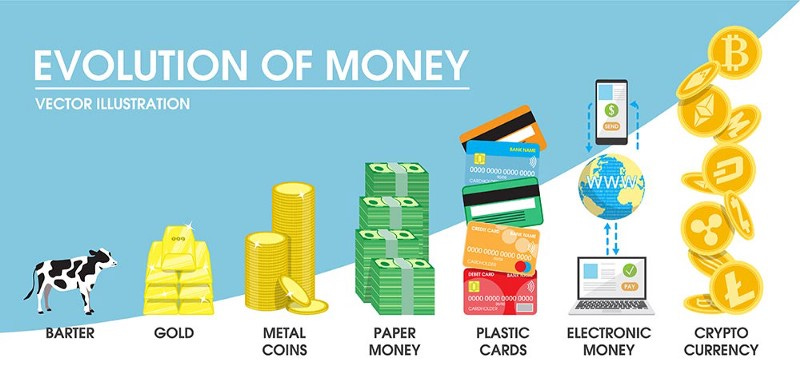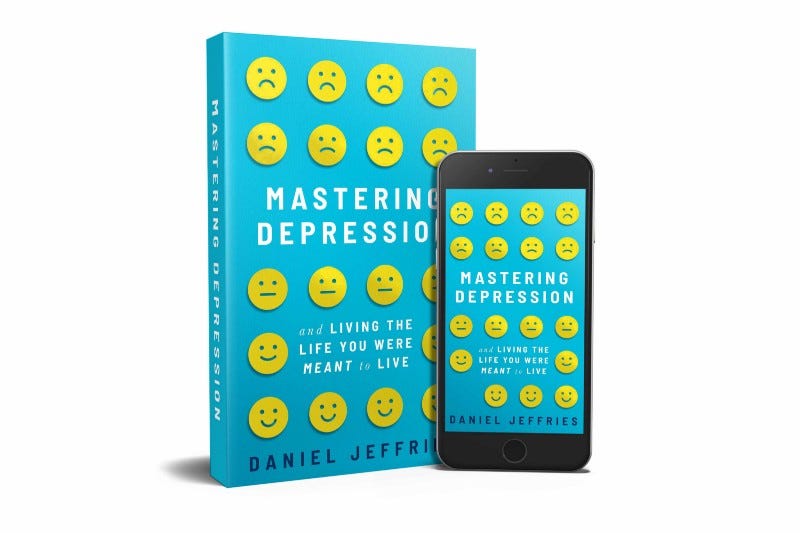Why People Still Don’t Get Cryptocurrency
After more than a decade of blistering growth, most people still don’t get cryptocurrency.
After more than a decade of blistering growth, most people still don’t get cryptocurrency.
Bitcoin is the best performing asset of the last decade by a huge margin and yet everyone from the mainstream media, to most nation states, to prominent traders, struggle to see what it means for the future. India is threatening to ban cryptocurrencies in move that will prove disastrously foolish if they really do it. Prominent gold bug, Peter Schiff, continues to watch the price of gold sputter while Bitcoin races by him and makes his son rich instead.
Over the past ten years, journalists and talking heads everywhere have declared Bitcoin dead over 400 times and it just keeps proving them wrong. It’s a Ponzi scheme. Fatally flawed. A grift. Not real money. Worthless. All of that as Bitcoin has surged from pennies to S60,000 a coin.
Even as artists rake in record value for their art with NFTs, it’s dismissed as nothing but a passing fad that will never take hold. That’s despite big franchises like the NBA adopting NFTs.
If you’re a fan of cryptocurrency, it’s easy to fall into the trap of thinking all these folks are just idiots who refuse to see something obvious but that would be a tremendous mistake. Many of these folks are incredibly smart and successful. So why can’t they see the value of Bitcoin and cryptocurrency? How are they missing something that’s continued to defy expectations for more than a decade?
To understand why, we just need to take a little dive into the history of money and how human beings form beliefs.
Tomorrow and Tomorrow and Tomorrow
Let’s get one thing out of the way first:
Tomorrow’s children won’t even remember paper and metal money.
The generations that come after Gen Z will grow up with programmable, electronic money from the moment they’re born and the only place they’ll encounter paper and metal money will be in history class.
The reason is simple. Today’s money is analog. It’s dumb money. It’s made of dead trees and metal. It’s inert. Even the electronic version of it you zip around on Paypal and via wire transfers is just an electronic record in a database. It’s not really electronic and programmable. If you put a dollar bill on the table, you can’t make it execute a smart contract. All you can do is save it or exchange it for goods and services.
Don’t get me wrong, paper and metal money are amazing pieces of technology. You probably don’t think of them as technology but that’s exactly what they are. It required minting coins in a way that were hard to copy so that people couldn’t make counterfit money out of thin air, which is a simpler form of the advanced printing methods we use today in federal reserves on highly specialized machines. That’s analog tech.
Metal and paper money concentrated value into a single universal form that everyone agreed to and it swiftly replaced bartering, which was highly inefficient. It saved people from having to figure out how many cows to trade for grain.
Exactly how many cows are worth how much grain? Bartering was inexact and hard to deal with because the guy you traded the cows to needed a place to store those cows. Now he was rich in cows, but what if someone didn’t want cows? How would he buy stones to build a house if the stone mason didn’t need more cows?
Metal and paper money solved the barters’ dilemma. Now the cow owner could sell them for coins and trade those coins directly for whatever he wanted. The grain salesperson could trade the grain for money and go get that stone to build a new house without needing to form a bilateral trade negotiation between the cow guy and the stone guy.
Analog money was a fantastic, universal value storage technology. Just look at the kind of coin and you know how much it’s worth because everyone else agrees to accept that coin too. It changed the world and the way we run our civilizations.
But the time of analog money is passing and passing fast.
Digital technology is infinitely more flexible and it will let us take money in a thousand new directions we’re only beginning to imagine now.
Tomorrow’s money is smart money.
Just as digital cameras have replaced their analog counterparts, so too will digital, programmable money replace plain old paper money. Kodak once owned 90% of the market for film and stood for a hundred years but it didn’t see digital cameras coming in time and it chose to see them as a flash in the pan. For a time they were right.
Digital cameras were slow and clunky. They couldn’t achieve real time shutter speed. They didn’t have the fidelity of traditional film.
Right up until engineers solved all those problems.
And within five years Kodak went from 100 years of dominance to bankrupt. That’s how fast innovation can crush those who stay willfully blind to the future.
But if you’re looking down on Kodak for missing something so obvious, take a look at your own predictions and I’m betting you didn’t see most of today’s innovations coming. When I started working in the Internet in the late 90s everyone told me I was insane and the Internet was a waste of time. It was only for nerds and fools. It was slow and clunky and ugly. They said the same when I went to work for a Linux company. Now the Internet is as ubiquitous as air and Linux powers every single device that matters to you in the world.
The thing is most folks just aren’t wired to see the future. They’re firmly fixated on the now. It makes sense from an evolutionary perspective. We spent a few million years running around in the forest, hunting and gathering. A focus on finding food and not getting eaten by tigers made a lot of sense if we wanted to survive. Thinking about tomorrow’s tigers didn’t help anyone. It was the province of the Shaman and medicine men of the tribe to look to the future and imagine where it was going but the rest of the tribe was firmly focused on not dying a horrible death.
We only started living in cities about 8,000–10,000 years ago. Civilization literally means “living in cities.” That’s not a hell of a lot of time for our brains to develop to a new way of seeing the world. And almost none of us did. Most people haven’t adapted to seeing beyond the here and now.
I’ve spent my whole life gazing into the misty haze of the future and over time I’ve come to realize one critical difference between how I see the world and how almost everyone else sees it. I look at broad patterns but most folks are zoomed in, looking at much shorter patterns. I look at abstractions of abstractions over decades, hundreds of years and even millennia. Because people are so zoomed in, they tend to see iterations of technology while I’m looking at categories of technology. Home video recording is a category. Betamax, VHS, DVD, Bluray and streaming are all iterations of that category.
The problem is most people mistake the current iteration of the technology for the category.
That’s a massive mistake that makes it almost impossible to see the future clearly.
People look at something like Betamax and they project its current characteristics indefinitely into the future. They see something that’s ugly and grainy and that can’t record two hours so it can’t record a whole movie. They extrapolate those limitations and limited characteristics to the technology as a whole and believe it will never work.
What they don’t realize is that engineers are always chipping away at those problems and that it’s only a matter of time before they get solved.
The same problem is happening today with digital money. People look at the current iterations of cryptocurrency and they see big energy waste, slow transaction times, volatile prices and they imagine those problems will go on forever. It leads to utterly short sighted backlashes against the technology and fear driven narratives. But the same things are already happening in crypto as happen in every other technology. The early iterations are starting to give way to new iterations.
Take something like Crypto Kitties. It pushed the limits of the Ethereum blockchain to the limits a few years ago. It was a collector game that let people breed and trade cute digital kittens and it really took off. But it ran up against the limits of Ethereum’s sluggish transactions and limited scale. Most people dismissed it but they mistook the iteration for the category.
The category is “Collectibles.” The global collectibles market, which is everything from rare toys to signed sports cards, is roughly $370 billion dollars.
The Crypto Kitties creators realized they needed to go beyond Ethereum. They needed a new kind of consensus and faster, smarter blockchain, so they built Flow. That’s already a sign of engineers learning from the past and at a much faster pace. Flow has near instantaneous settlement, rapid scaling, and upgradeable smart contracts. Upgradeable smart contracts are a must if we want the ecosystem to really evolve over time. If a smart contract has a bug, it needs a way to get patched and patched fast before it become immutable.
The Flow blockchain now boasts big businesses running on top of it, like the NBA, who knows a little something about the collectibles market, because sports trading cards have dominated that arena for decades.
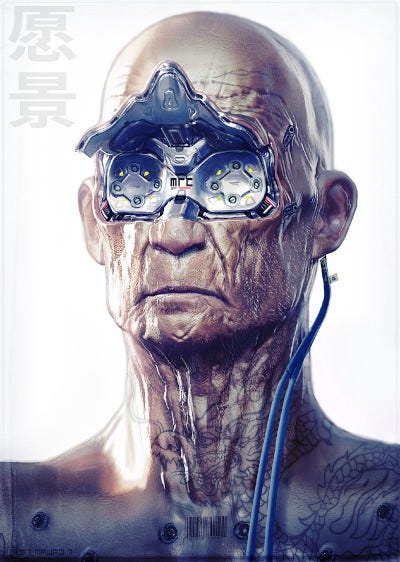
Artist Ben Mauro, who’s art I’ve loved for years, recently sold his first series of trading cards on Flow for $2 million dollars, a life changing amount of money for an artist. Ben was a successful artists by any standard before that NFT sale. He’s worked on movies like Elysium and games like Call of Duty Black Ops. But while those companies made 100s millions off his work, he just made a living. NFTs and by extension, blockchains and cryptocurrency, hold the power flip the script and let artists profit directly from their own work.
I admit to being a little skeptical of NFTs until now. I made the same mistake as everyone else. Sometimes I still revert to my “lizard brain” which is focused on the immediate too. I saw potential long term promise in the tech but I couldn’t quite see how it would work in the long run. In other words, I was looking at the iteration of the technology and not the category.
But the blinders are off.
Look into the future just a little bit and it’s not hard to see digitally unlockable cards that only you own, real ownership contracts that hold up in a court of law and subscriptions to artists that unlock special rewards like super discounts on upcoming cards and collectibles and systems that keep paying artists no matter how many copies of a jpeg are made.
All that and more is coming in future iterations of digital collectibles and it’s just the start of a wider revolution in money.
Cutting Out the Middle Man
Nobody likes a middle man except the middle man.
We all hate scalpers because we can’t get a PS5 for a reasonable price as bots buy up the stock in seconds so scalpers can flip it on Ebay for double or triple the price. The scalpers love it but nobody else loves it.
Banks are middle men too. So are governments.
The biggest problem with today’s dumb money is we have to trust centralized middle men to keep that money and move it around world. But tomorrow’s children won’t need as many of those middle men. Today, when you buy a house, your money goes into escrow, a holding account by a central authority. Once the contract gets signed by both parties and enough time passes the money gets released to the seller.
Tomorrow we won’t need an escrow intermediary. A small program will simply self-escrow the money and it will release when both sides digitally sign the contract. That’s what the DeFi craze is all about. Tomorrow you’ll have an easy way to loan money directly to other people you’ve never seen or met and earn interest on it instead of the banks. And you’ll borrow money that way too. You won’t go to a bank and beg them to give you money, you’ll get it from a pool of small, crowdsourced investors, as those investors earn real interest on their money instead of the measly interest they get today in their savings account in a bank.
But that’s tomorrow. Today is different.
Today paper and metal nation-state issued money dominates the world.
Even though Bitcoin surged to over a trillion dollars in market cap over the last few years, it’s still just a drop in the bucket. You can forgive people for not seeing its true potential. There are single companies bigger than Bitcoin’s market cap, like Apple, who’s market cap is roughly double the worth of all Bitcoin in existence. They’re not the only company bigger than Bitcoin. Many of the world’s oil companies, not to mention brick and mortar behemoth Walmart, beat the world’s biggest crypto by comparison.
Check out this chart below and you’ll see that global property and derivatives dwarf cryptocurrency too, as does the M2 money supply, which includes all the money in the world in terms of currency, savings and deposits, which currently stands at 95 trillion dollars.
But in the coming decade those numbers will start to flip because the M2 money supply will be nothing but electronic money, a mixture of private cryptocurrency and central bank digital currencies. Cash will cease to exist. It’s already happening across the world, in cutting edge tech countries like China, where even the homeless get paid with QR codes.
As M2 increasingly becomes synonymous with crypto, the world will look very different from the world today. It will be filled with micro-transactions for everything from your favorite web pages, to newsletters, to buying bread at the local sourdough bakery. You’ll love the bakery so much that you’ll buy a fractional share in it on a peer to peer exchange and you’ll add it to an ever shifting portfolio of assets that deliver unprecedented passive income to regular people everywhere. You won’t use a card, you’ll use a QR code, cutting out the VISA and MasterCard machine driven middle man.
Make no mistake, a massive sea change is coming to money. And that’s one of the biggest reasons people still don’t get crypto.
Tomorrow’s world looks almost nothing like today and that makes it so much harder to see.
To understand why you just need to understand a little about Rum.
Yo Ho Ho and a Bottle of Rum
The biggest reason that people can’t see programmable money coming down the pike is because they’ve never seen a different kind of money in their entire lives.
Money has always been the same. It’s issued by nation states. That’s what they understand.
Decentralized, programmable money, issued by nobody but the protocol itself, is a completely different pattern. It’s a millennia spanning pattern in money, one that transcends the current human life space. It’s the shift from one kind of money to another. It’s happened multiple times in the past but not in the lifetimes of anyone alive today.
And for most people, seeing beyond the scope of their own life is next to impossible.
The idea that you could have private money or money that doesn’t need a central authority to issue it is totally outside their understanding. It’s as if an alien ship landed with radically different starship and weapons that don’t obey the laws of physics as we know them. They’re shooting lasers that don’t go straight, but that home in on people, bending around corners at will.
Truly long term patterns are incredibly difficult for people to process and understand. We’re short term pattern matching masters. We abstract away a short term pattern and that’s how we learn.
Usually that works really well for us. It keeps us focused on the immediate threats and the joys of life in the here and now. It limits the amount of brain activity to understand something we’ve never seen before now. If we can match that new thing to a pattern we’ve already seen we don’t need to waste a lot of energy trying to understand it. Thinking is hard and it requires a lot of energy. If we didn’t have shortcuts to thinking we’d crumple on the ground in a ball and have to eat around the clock like Gorillas, who spend half their waking hours chewing raw food.
When we get cut by a knife just one time, we abstract the concept of sharpness. We don’t need to get cut by a sharp rock to know that will hurt us too. We don’t need to get pricked by a needle to know we should avoid it. We already know it because we’re abstraction machines.
But that short term pattern matching can betray us badly. When something truly new comes along, our higher brain needs to kick in and do some heavy processing to understand it. Most people don’t bother to do the work. If it’s not an immediate threat or benefit to their lives than it doesn’t really matter all that much to them so they rely on their lizard brain, which is their lower brain. That’s the part of the brain where our quick firing heuristics and pattern matching work. When we cross the street because someone is weaving and shouting wildly, we don’t need to do a lot of processing. Our lizard brain is at work and that pattern of “dangerous and unstable person spotting” is usually good enough to keep us alive.
The pattern that everyone alive today has seen over their entire lifespan is “nations states issue dumb money” so it’s hard to see beyond it. In the modern world the nation state reigns supreme. Everyone lives under the banner of a clear and stable border with a flag and a patriotic song.
But as Yuval Harari writes in Lessons for the 21st Century, this wasn’t the case for most of history. Borders were fluid and likely to change overnight as one hideous conqueror got slaughtered by another one who took over and moved the chains. Kingdoms and borders often shifted multiple times in the course of a person’s natural life span. One day you could wake up under the jurisdiction of one tribal power only to find yourself under the power of an expanding empire the next.
If you lived during the horrific Waring States period of Japan, your rulers changed dozens of times as powerful warlords fought for territory through a brutal 125 years of civil war, more than four generations of entire human lives.
Money was a lot different in those days too. It was often more decentralized because you couldn’t trust the people in power to last. People mostly used commodities as trading instruments, like salt, or silk, or spirits.
A quick trip back through the history of money is all you need to understand that money is not a fixed idea. It’s ever evolving. It’s been decentralized and issued by central authorities. It’s been powered by the people or powered by the might of empires. Here are just a few things that have acted as money in the course of human history:
Silk
Spirits (like Rum)
Salt
Bark
Shells
Cattle
Metals
Coins
The intrepid traders braving the ancient Silk Roads to bring goods from near and far, used silk because it was a highly concentrated form of wealth. The idea that money is intrinsic to the medium that houses the store of value is just not true though. If people feel something is valuable, it is valuable. It’s a simple as that. Silk may have been rare, and hard to make, but it has no intrinsic value other than people thought it was beautiful and precious.
Gold bugs will tell you that gold is the only real money and that it has utility value. There is no value in gold except we say there’s value in it. It was shiny and pretty and people gravitated to shiny and pretty long before it ever got used a passable semiconductor and before semiconductors even existed.
We saw gold as money because it was semi-rare and it looked good around a princesses’ neck when turned into jewelry. Its utility value is practically nil. As precious metals go, it’s not particularly hard or much of a conductor versus other precious metals. Diamond and graphene outpace it by an order of magnitude when it comes to strength. So does carbon fiber.
If you want real utility, look at something like Lithium, which is used in electronics and batteries and medicine but we don’t use that for money.
Gold has value because we say it has value. It’s a simple as that and that’s the truth of every money that’s ever existed.
Anything that can act as a store of value can act as money. Read The History of the World in Six Glasses and you’ll see why Rum was used as money and dominated the horrific and disgusting historical slave trade in Africa and the Americas.
Rum was a super concentrated form of wealth. Water usually carried disease for the vast majority of human history so everyone from the very young to the very old drank beer, wine or spirits. It was usually watered down so they weren’t hammered all day or just got a little buzzed. Having a highly concentrated alcohol meant you could dilute it for a much longer time, which made it extremely long lasting. In other words, just like drugs today, you could cut it, which meant you could make it last longer and string out the divisibility of its value.
American slave traders paid African slave traders in their favorite form of concentrated wealth, Rum, because it was long lasting, cheap to produce, and acted as a store of value like nothing else at the time. In fact, it wasn’t the US dollar that dominated international trade in the early years of the American rise to power.
It was Rum.
The Dark Side
There’s one last reason people can’t see the rise of programmable money coming.
Fear.
New things are terrifying to people. They’re disruptive. They don’t want to change. Change could mean they’re now on the wrong side of the winning equation. People don’t want to be left behind.
Banks see crypto as an existential threat and they should. Banks will not go away but they’ll need to radically adapt their business models or die a fiery death. Most won’t make it. They’ll stay deliberately blind, beholden to their current business model. Many will go the way of Kodak. A few will be smart enough to survive though, pinning their hopes on tomorrow instead of today. Others will pile up patents and try to sue their way to profitability, but that’s not a business model and they’ll die too and they should because patent trolls are parasites on the modern world.
Governments fear new money most of all.
The nation state masters of the world today own the power of the Gods: The exclusive right to mint and distribute money. That makes them the masters of economics and international trade and it gives them dominion over everyone’s lives. Control the money and you control the world.
They don’t want to give that power up and they won’t do it easily.
Authoritarian and authoritarian leaning countries are even more worried. They’re worried about crypto’s ability to disrupt their power and absolute control over the minds of their citizens.
Good.
Authoritarian governments are never for people. They’re governments that seized power using the name and rhetoric of the people, while choking the life out of people with their hideous, selfish, insane policies. Crypto that they don’t control can allow their people to bust out of that bondage. Imagine if a truly scalable, widely accepted international cryptocurrency existed, that held its value steadily, a stablecoin of near perfect balance that they could spend anywhere. In Venezuela, as insane authoritarians came to power and dramatically destabilized markets and money itself, giving way to hyperinflation, the people could have simply switched their money to a stable, international money instead and waited out the regime or escaped its brutal power when they had a change to slip over the border.
Today people are largely trapped when insane people take over. Tomorrow they’ll have a shot at escaping the insanity if they can take their money and go.
Authoritarian attacks on crypto will blow back on them. They’ll ban it like India is trying to do now. That play book has worked for them for centuries but it won’t work out well for them now. What they hope is they’ll be able to exploit the power of blockchains by banning private crypto, but they won’t be able to do it because they’ll have no one in the country capable of developing it or understanding it.
You see, a blockchain is nothing without the coin to power it. The coin makes it go. Without the coin it’s just a distributed database and a shitty distributed database at that. If people have no incentive tied in the coin they won’t work with the technology and it will be nothing but an inert technology like any other.
As the years go by and other countries embrace blockchains and private currency, they’ll soak up all the talent while authoritarian governments will have nothing but also-ran talent struggling to build working blockchain tech that nobody wants or trusts.
We only have one planet and the power of individual nation states has reached its zenith.
Just as the power of the Samurai eventually fell away to a civil government, so too will the modern form of the nation state that rules over all our lives now change in the coming centuries. Their power won’t disappear over night or even in our lifetimes, but it will slowly and irrevocably decline and give way to a more international order of independent territories, whether the populists want it to or not. The populists are on the wrong side of history, as they always are and their rage and fear can’t hold back the future.
Nobody can stand against the tide of time.
The End in the Beginning
But maybe you’re still struggling to understand crypto? Well, you really just need to understand one thing:
Crytpo is smart money.
It’s programmable. Changeable. Intelligent.
Today’s money is stupid. Tomorrow’s kids will not understand stupid money.
What do you mean I can’t send it across the world instantly? What do you mean I can’t self-escrow the money when I buy something and only release it when I get the thing?
Today’s money will be like looking at an old flip phone that can’t take pictures, chat, text and browse the web. What’s the point?
Crypto is programmable money. We can bend it, warp it, shift it, and make it dance. More than anything that’s the real draw of crypto.
All the various technological hurdles will get solved with time. Scaling? Ease of use? Private and public transactions? Governance? All of it will get solved in the next decade or two. All of it is getting solved right now, as new and better consensus systems rise and developers learn from the blockchains of yesterday.
Today we see the same three tired, boring stories in the mainstream media:
It’s not real money because only the government can do that.
It’s used for bad stuff.
It wastes energy.
Those narratives are dying off.
The energy debate is still there but it will disappear as we switch to proof of stake and other consensus mechanisms.
It’s used for bad stuff is mostly dead except for when the government wants to jam more regulation down our throats at the last second. Giant hedge funds and institutions like Tesla and Twitter are already buying. Coinbase is going public and valued at 68–100 billion dollars.
Crypto is increasingly mainstream.
The very idea of money is changing too. It used to be that only governments could do it but a look back to history tells us how foolish that view really is and it will fall away too.
The only constant in life is change. And all our yesterdays have lighted fools the way to dusty death.
The foolish narratives of the short sighted are dying. Slowly but surely they’re dying.
In twenty five years most folks won’t even remember dumb money printed on paper and minted as coins. There won’t be any stories about cryptocurrency versus “real” money.
People won’t even know the word cryptocurrency.
They’ll just call it money.
###########################################
I’m an author, engineer, pro-blogger, podcaster, public speaker. My upcoming book, Mastering Depression and Living the Life You Were Meant to Live tells the story of how I battled the dark forces of existence and still found a way to live a big, bold and beautiful life.
###########################################
If you love my work please visit my Patreon page because that’s where I share special insights with all my fans.
Top Patrons get EXCLUSIVE ACCESS to so many things:
Early links to every article, podcast and private talk. You read it and hear first before anyone else!
A monthly virtual meet up and Q&A with me. Ask me anything and I’ll answer.
Access to the legendary Coin Sheets Discord where you’ll find:
Market calls from me and other pro technical analysis masters.
The Coin’bassaders only private chat.
Behind the scenes look at how I and other pros interpret the market.
###########################################



